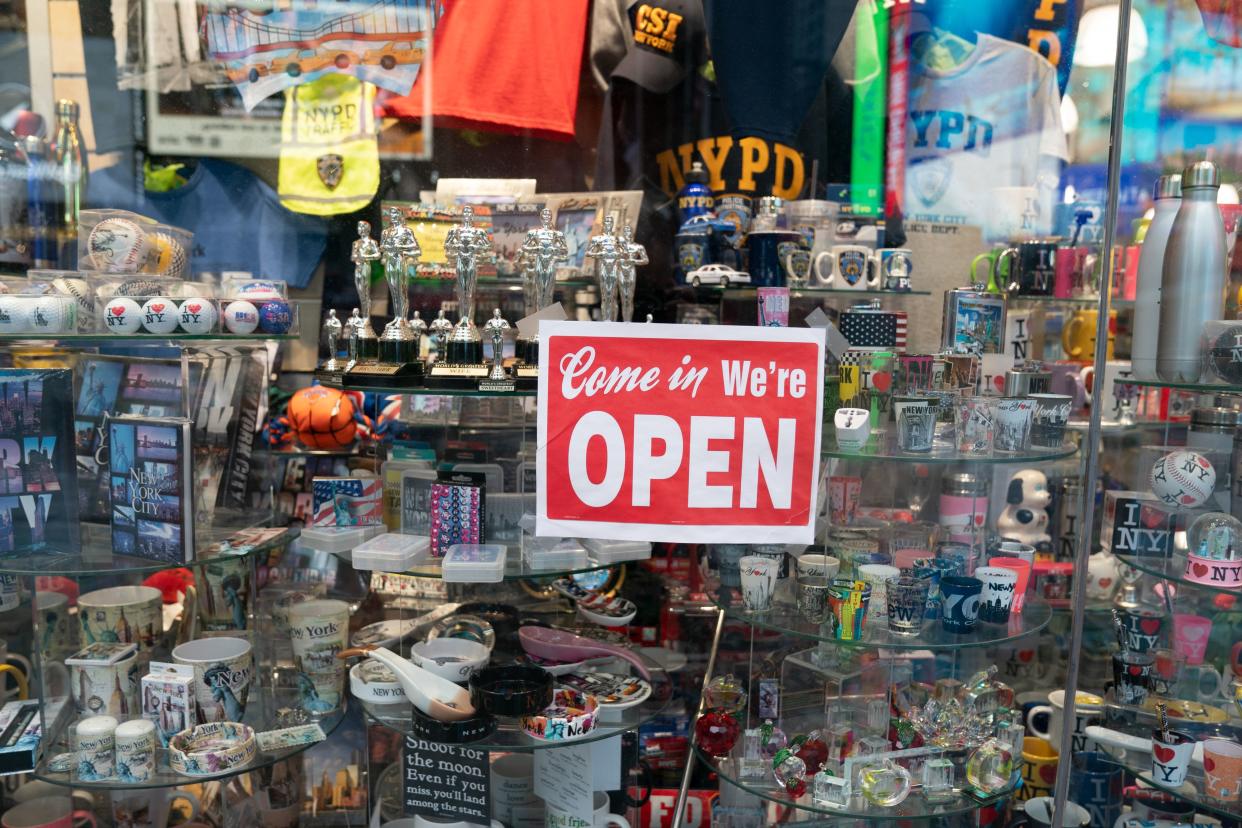‘It was a sucker punch’: The options for small business relief during Delta surge
Earlier this year, the government’s key lifeline for small businesses ended when the Paycheck Protection Program ran out of money and stopped accepting new applications at the end of May.
Since then, the U.S. economy’s outlook has grown more unsettled following the summer surge in cases driven by the Delta variant of Covid-19.
“It was a sucker punch,” Richard Hunt, president and CEO of the Consumer Bankers Association, told Yahoo Finance Live.
Hunt, whose trade association represents banks with $14.5 trillion in assets or about 79% of all assets in the U.S., added that “yes, it did hurt small businesses as consumers' confidence went down.”
Yet Hunt, who came on to commemorate National Small Business Week, noted that the situation for small businesses now is much better than 12 months ago.
Studies found that somewhere in the neighborhood of one-third of businesses shut their doors during the first year of the pandemic. The situation has been different this summer with job posting levels holding steady and Biden administration officials saying that a return to lockdowns is not on table.
The PPP program stopped and started multiple times over the last 18 months with the last major infusion – signed by then-President Trump at the end of December – paving the way for businesses to receive a “second draw” if needed.
‘An uptick’ in traditional loans
Hunt, along with Biden administration officials, have noted that there is still a continuing need for help among small businesses.

Hunt said he’s seen an “uptick” among his member banks in the number of traditional loans they're giving out. “Obviously, we've been doing these loans for over 200 years,” Hunt said. They will continue “in a reasonable and responsible way so the small-business person can make sure they can afford their payments," he said.
The U.S. Small Business Administration, which administered the PPP program, has another program called the Economic Injury Disaster Loan program, which offers traditional loans. The SBA offers small businesses a range of assistance programs, including so-called 7(a) loans, their most common loan program.
According to the CBA, the lending environment remains fluid but "as of now, CBA members banks have not reported borrower demand for additional PPP funds." Instead, they say, CBA members are gravitating back towards traditional lending options like conventional loans and SBA programs like 7(a) loans.
Another government effort – also administered by the SBA – offered direct grants to eligible restaurants and bars impacted by COVID-19 earlier this year. That Restaurant Revitalization Fund was quickly depleted and industry groups have been making the case for a refill to avoid a wave of restaurant and bar closings this fall.
During a recent Yahoo Finance Presents interview, SBA Administrator Isabella Casillas Guzman noted that Congress continues debate whether to replenish the Restaurant Revitalization Fund – and “there's no specific grant programs in the pipeline” for other industries.
The Paycheck Protection Program existed somewhere between conventional loans and grants. The program offered loans that were forgivable with a one-page form.
‘I thought this was the best of America’
In total, small business optimism has rebounded somewhat in 2021 from pandemic lows, with owners now expressing more concerns about things like finding enough labor and managing supply chain disruptions instead of the direct effects of COVID-19.
The gap between open positions and workers available to fill them remains at record high levels, with some hoping the end of increased unemployment insurance will drive more individuals to the workforce in the coming months with others, like Commerce Secretary Gina Raimondo in a Yahoo Finance interview this week focusing on retraining workers.
"We have employers who can't find people to fill the open jobs, and the primary reason is there's a skills mismatch," she said.
All in all, studies have found that government stimulus kept millions of Americans out of poverty last year, including the PPP's efforts which distributed over $792 billion in forgivable loans since the pandemic began. The most recent data from the SBA found that a majority of PPP loans have already been forgiven. More than two-thirds – 67% – of PPP loans has since been forgiven.
The forgiveness deadlines for the ”first draw” loans passed last month, but small businesses are still free to apply for forgiveness for their “second draw” loans until 10 months after the covered period of their loans ends.
Hunt said the PPP helped save about 90 million jobs. “I thought this was the best of America,” he said about the program’s legacy.
This story has been updated.
Ben Werschkul is a writer and producer for Yahoo Finance in Washington, DC.
Yahoo Finance Presents: SBA Administrator Isabella Casillas Guzman
A key stimulus program for small businesses is now largely out of money
Biden's vaccine mandate: Even Trump-friendly companies seem comfortable with COVID restrictions
Read the latest financial and business news from Yahoo Finance
Follow Yahoo Finance on Twitter, Facebook, Instagram, Flipboard, LinkedIn, YouTube, and reddit.
